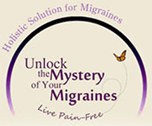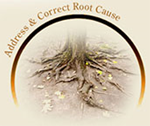





What is the Autonomic Nervous System (ANS)?
Click on the links to watch messages on videos.
https://www.youtube.com/watch?v=qs00k3PWFLA
Among the body’s systems is one of paramount importance: the Autonomic Nervous System (ANS), which controls many of the body’s major functions automatically without any conscious input from you. It’s a regulatory branch of the central nervous system that helps people adapt to changes in their environment. It adjusts or modifies some functions in response to stress.
There are two divisions of the ANS: The sympathetic and the parasympathetic. ANS acts through a balance between these two components and it helps regulate:
- Blood vessels’ size and blood pressure
- The heart’s electrical activity and ability to contract
- The bronchium’s diameter (and thus air flow) in the lungs
You and I know that migraine pain is caused by a change in blood vessels size in the skull constricted or dilated blood vessels.
Medically, there are many tests of the ANS. Most of them are easy to perform but hard to interpret individually. So far, there’s no cure for autonomic disorders. Still, several physical measures and drugs can help people with autonomic failure prevent low blood pressure or feel less uncomfortable during episodes.
Holistically, in order for the ANS to function correctly, part of which is body-healing and rebuilding, the autonomic nervous system needs to be supplied with real foods – the true nutrients- proteins, fats, and minerals provided by real whole foods and if these are not provided, the autonomic nervous system cannot do its job.
So in migraine cases, it could be Sympathetic or Parasympathetic autonomic nervous system dominance.
Sources/Adapted:
- The Human Body, Editor-in-Chief Charles Clayman, MD
- http://www.americanheart.org/presenter.jhtml?identifier=4463
- http://www.foodkills.org/index.html
- Allergy Relief & Prevention by Frances Taylor MA, Jacquline Krohn MD, and Erla Mae Larson RN
Disclaimer: Statements made are not intended to diagnose, treat, cure, or prevent any disease. It’s for educational information only. Any recommendations are not intended to replace the advice of your physician.
Vitamin D Deficiency
https://www.youtube.com/watch?v=XjZl6o7Xy5Q
We tend to become more and more house-bound and avoid sun exposure especially as we get older, so our skin gets thinner and less efficient at converting cholesterol to Vitamin D.
Not only that we prevent sunrays from penetrating our body system to be converted by our liver into Vitamin D but we’re keeping ourselves away from tremendous health benefits like preventing Osteoporosis, depression and cancer; purifying our body, helping to prevent high blood pressure, cold and flu and multiple sclerosis.
Sun appears daily in our life to lighten up our world. This is a reality. It’s a must for every being on earth; human, animal and plants. It gives energy, without it there would be no life: if there’s no sunlight there would be no food to grow; it is a necessity for the body to function and obtain energy.
Over the last several decades the public has been led to believe that exposure to sunlight is harmful. We’ve been told to avoid sunlight and slather on sunscreen every day before sun exposure.
Sunlight produces UVA and UVB rays. It is the UVA rays that are responsible for vitamin D production in your body. So it is now recommended to allow the sun to shine on your skin for at least 20 to 30 minutes before putting on any sunscreens. It is impossible to get too much vitamin D from the sun.
Vitamin D is a fat-soluble vitamin that is naturally present in very few foods, added to others, and available as a dietary supplement.
Vitamin D promotes calcium absorption in the gut and maintains adequate serum calcium and phosphate concentrations to enable normal mineralization of bone. It is also needed for bone growth and bone remodeling by osteoblasts and osteoclasts. Without sufficient vitamin D, bones can become thin, brittle, or misshapen. Together with calcium, vitamin D also helps protect older adults from osteoporosis.
Vitamin D sufficiency prevents rickets in children and osteomalacia in adults.
Vitamin D has other roles in the body, including modulation of cell growth, neuromuscular and immune function, and reduction of inflammation.
The intensity of UVB rays is also reduced by clouds, pollution and UVB will not travel through glass, so sitting next to a window will not give you enough sunlight to make vitamin D.
Source of V.D: There are food sources for vitamin D such as salmon, cod liver oil and fortified foods but researchers are now showing this is not enough. Supplementation is recommended, especially in the winter months. Most supplements may or may not be strong enough and some individuals are sensitive to vitamin D supplements.
Sources/Adapted:
- National Institute of Health Office of Dietary Supplements. “Dietary Supplement Fact Sheet: Vitamin D.” Updated May 2008
- http://ods.od.nih.gov/factsheets/vitamind/
- http://nutrition.about.com/od/askyournutritionist/f/sunlight.htm
- Miracle Vitamin You’ll Want Plenty Of This winter e-newsletter, Promolife.com
- David Williams Vol 13 No 7 p 51
- (Dr. Davide Williams Vol 13, N 5)
Disclaimer: Statements made are not intended to diagnose, treat, cure, or prevent any disease. It’s for educational information only. Any recommendations are not intended to replace the advice of your physician.
Hypothyroidism
https://www.youtube.com/watch?v=S-BR5IIc_aw
Lots of people with hypothyroidism (low thyroid function) are misdiagnosed. They experience various symptoms without realizing that they are a thyroid-related issue- yet you hear your doctor saying your thyroid was tested normal.
An estimated 27 million American have a thyroid disease, and more than half are undiagnosed. Frequently misunderstood, and too often overlooked and misdiagnosed. Thyroid disease affects almost every aspect of health, so understanding more about the thyroid, and the symptoms that occur can help you protect or regain good health. The vast majority is: Hypothyroid – under functioning, slow or sluggish thyroid.
Your thyroid is a gland. It’s located in the throat on your vocal cords. It has a shape of a butterfly. Your Thyroid is considered a master gland; it affects every cell in your body. It works as a thermostat because your body needs a constant level of heat to function properly and vigorously.
The thyroid controls how quickly the body uses energy, makes proteins, and controls how sensitive the body should be to other hormones.
The thyroid gland participates in these processes by producing thyroid hormones. These hormones regulate the rate of metabolism and affect the growth and rate of function of many other systems in the body.
Do you know that a morning headache or migraine is one symptom of low thyroid function (Hypothyroidism)?
Another symptom of low thyroid besides migraines is fatigue. The source of energy in our body comes from two glands: The Thyroid and the adrenal glands. The healthier these glands are, the better your energy level will be. The weaker they are the poorer your energy level will be. These two glands are called the energizing partners.
Have you ever felt stressed and tired along with a wired-sensation that won’t go away? This is the sign of adrenal malfunction that affects the thyroid function.
Thyroid Blood Tests
The most common test for thyroid function is the TSH (thyroid-stimulating hormone) test. The TSH measures a chemical sent by the pituitary gland in the brain, which relays orders to the thyroid gland about how much thyroid hormone the body needs at a given time. However, in many studies and medical experiences TSH is not the most accurate indicator of a thyroid problem.
The following panel of laboratory tests can give you the best reading:
- TSH — This is the BEST test. However, beware most all of the “normal” ranges are simply dead wrong. The ideal level for TSH is between 1 and 1.5 mIU/L (milli-international units per liter)
- Free T4 and Free T3. The normal level of free T4 is between 0.9 and 1.8 ng/dl (nanograms per deciliter). T3 should be between 240 and 450 pg/dl (picograms per deciliter).
- Thyroid antibodies, including thyroid peroxidase antibodies and anti-thyroglobulin antibodies. This measure helps determine if your body is attacking your thyroid, overreacting to its own tissues (i.e., autoimmune reactions). Physicians nearly always leave this test out.
- For more difficult casesTRH can be measured (thyroid releasing hormone) using the TRH stimulation test. TRH helps identify hypothyroidism that’s caused by inadequacy of the pituitary gland.
Sources/Adapted:
- Low thyroid function (Diet Cure book by Julia Ross, M.A.)
- The Eck Institute of Applied Nutrition and Bioenergetics, Ltd. The Healthview Newsletter
- http://articles.mercola.com/sites/articles/archive/2010/01/02/Many-Symptoms-Suggest-Sluggish-Thyroid.aspx
- http://thyroid.about.com/cs/basics_starthere/a/thyroid101.htm
- http://thyroid.about.com/cs/basics_starthere/a/thyroid101.htm
Disclaimer: Statements made are not intended to diagnose, treat, cure, or prevent any disease. It’s for educational information only. Any recommendations are not intended to replace the advice of your physician.
Why Are You Keep Getting Migraines in Spite of What You’re Taking or Doing?
A 2004 article suggested that there are almost 20 million migraine attacks happening every day. You’re still getting migraines because what you’re taking is not working, and your body is, however, talking to you through your unbearable pain and symptoms while it keeps receiving the wrong needs.
Eventually, you keep searching around to find some kind of relief that can reduce the excruciating pain. It’s pretty easy to get a pain relief pill and take it once you’re in pain, but keep in mind that you’re suppressing the symptoms rather than addressing the cause.
Following this routine and cycle, you’re not only calming or reducing the pain, but you’re making it worse. Your migraines keep coming back sooner and stronger with no mercy while they create more damage to your body systems. Even more health symptoms will manifest themselves down the road.
Migraine pain initiates once your Nervous System (NS) is out of balance where your blood vessels change their size in your skull. This is the original cause of your horrible unbearable pain (the throbbing and pounding sensation). Now, taking any pain reliever that is not addressing this area won’t do the job.
But… the biggest task is to discover, address, and correct the other underlying root reasons that cause the Nervous System (NS) to be out of balance. Well, stick with me and you’ll be moving forward on your pain-free journey one step at a time.
Could be possible to avoid a migraine at the first place?
YES…, it’s possible ONLY naturally and in specific time!
Find out more by visiting www.unlockthemysteryofyourmigraines.com and click the following button: “Turn Unruly Symptoms into Steps that Rule”.


